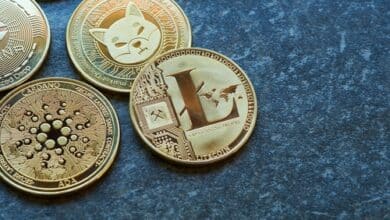Short-Term Investments: A Comprehensive Guide to Types, Risks, and More

This comprehensive Tokenhell guide will delve into short-term investments, exploring their essence, objectives, operational dynamics, merits, and demerits and furnishing illustrative instances of these widely embraced financial tools.
Defining Short-Term Investments
Short-term investments refer to financial assets that can swiftly convert into cash, typically within three months to one year. Remarkably, certain short-term investments may persist for up to five years while retaining their short-term classification.
These financial instruments, commonly called negotiable securities or temporary investments, encompass many options. These options include certificates of deposit, Treasury bills, short-term bonds, and money market funds, among others.
Short-term investments bear substantial significance within the modern financial arena for diverse reasons. They empower individual investors and corporate entities to realize returns on surplus capital before deploying these funds for alternative purposes, optimizing capital efficiency. Additionally, they serve as a temporary repository of value, ensuring swift conversion into cash to meet unanticipated liquidity requirements. In essence, they constitute a readily accessible financial safety net characterized by a conservative risk tolerance, often presenting diminished risk in contrast to long-term investments.
In sum, short-term investments play a pivotal role by complementing diversified investment portfolios while conferring liquidity and stability when juxtaposed with more precarious long-term investments.
Goals Underpinning Short-Term Investments
The primary objectives compelling companies and investors to engage in short-term investments encompass:
Fulfilment of Immediate Financial Needs with Flexibility: This objective resonates particularly with individual investors seeking to invest a portion of their savings in instruments like a 6-month certificate of deposit. Subsequently, these funds can be harnessed for purposes such as making a down payment on an automobile. Short-term investments enable the accrual of additional returns while ensuring the maintenance of liquidity, poised to access capital promptly in the face of unforeseen difficulties.
Bolstering Working Capital for Corporate Entities: Companies often navigate seasonal ebbs and flows in cash flows. By allocating surplus funds into instruments like commercial paper or Treasury bonds, these entities can optimize returns on capital not yet earmarked for expansion, thereby bolstering their working capital.
Seizing Transitory Market Opportunities: Financial markets occasionally proffer fleeting opportunities, be it in the form of predictable interest rate fluctuations or asset price variations. For instance, during a transient upsurge in corporate bond yields, investors can strategically invest in short-term bonds to capitalize on these ephemeral circumstances.
Low-Risk Pursuit of Moderate Returns: Investors possessing a conservative risk appetite seek to garner moderate yet secure short-term returns. Instruments such as certificates of deposit or Treasury bills offer predictability and stability, making them an apt choice for risk-averse individuals.
Functionality of Short-Term Investments
Investors embark on their journey by selecting instruments aligned with their investment goals and risk tolerance. Upon maturity, the investor reclaims their initial capital and the interest accrued during the stipulated period. At this juncture, they can either withdraw these funds or reinvest them in a fresh short-term instrument, thereby facilitating the capitalization of accrued gains.
Now, let us delve deeper into the mentioned exemplars of short-term investments:
Certificates of Deposit (CDs): Time deposits offered by banks yield higher interest rates than traditional savings accounts, contingent upon locking in invested funds for a predetermined duration, which could span from several months to a maximum of five years. Notably, they are prized for the FDIC insurance, translating into minimal risk.
Money Market Accounts: These FDIC-insured accounts necessitate a minimum investment but offer superior returns when juxtaposed with conventional savings accounts.
Treasury Securities: These encompass bonds issued by the U.S. government, including bills, notes, floating rate notes, and Treasury Inflation-Protected Securities (TIPS). Maturity durations range from 91 days to one year, and they are heralded as virtually risk-free investments.
Bond Funds: Mutual funds or ETFs curated by investment firms channel investments directly into bonds. They are suitable short-term investment avenues, although due consideration must be accorded to associated fees. Essentially, they are amenable to investment horizons spanning one to three years.
Municipal Bonds: Issued by local governments, these bonds often enjoy federal tax exemptions in the United States, offering attractive interest rates for short-term investments.
Peer-to-Peer (P2P) Lending: Enables profit generation by lending capital for brief durations, facilitating connections between investors and loan applicants via online platforms. However, it carries slightly higher risk due to platform volatility and limited regulatory oversight.
Roth Individual Retirement Account (Roth IRA): This alternative grants the advantage of tax-free growth and offers versatile investment opportunities, making it a viable choice for short- and long-term investment goals.
Short-Term Vs. Long-Term Investments
One fundamental disparity between short-term and long-term investments lies in their respective maturity periods. Short-term investments typically have maturities ranging from one day to five years, whereas long-term investments often extend well beyond the five-year threshold.
In terms of returns, short-term investments furnish moderate yet steady and predictable profits, in contrast to the heightened returns characteristic of long-term assets, albeit accompanied by elevated risk stemming from increased volatility.
Consequently, short-term investments prioritize capital preservation and immediate liquidity, whereas long-term investments strive to maximize returns, albeit at the cost of assuming greater risk and reduced liquidity.
Advantages and Risks of Short-Term Investments
Short-term investments proffer a panoply of advantages. Notably, their high liquidity ensures swift conversion into cash during unforeseen exigencies. They also exhibit low credit or default risk, courtesy of their reliance on high-quality credit instruments. Moreover, when juxtaposed with their long-term counterparts, they guarantee stable and predictable returns with diminished volatility, facilitating the exploitation of transient investment opportunities. Lastly, short-term investments have historically yielded superior returns to conventional savings accounts.
Conversely, short-term investments bear inherent drawbacks, including limited returns compared to long-term alternatives. They necessitate ongoing analysis and periodic reinvestment of funds. Crucially, fluctuations in the value of short-term investments directly impact a company’s financial performance.
Conclusion
Short-term investments are apt for risk-averse investors or those necessitating swift liquidity. They furnish moderate and consistent returns while retaining the flexibility to convert assets into cash during unforeseen circumstances expeditiously.
Nonetheless, it remains imperative to comprehend both their merits and demerits thoroughly, conducting meticulous analyses of each financial instrument before determining whether this investment modality aligns with the overarching objective of optimizing capital within a predefined
Tokenhell produces content exposure for over 5,000 crypto companies and you can be one of them too! Contact at info@tokenhell.com if you have any questions. Cryptocurrencies are highly volatile, conduct your own research before making any investment decisions. Some of the posts on this website are guest posts or paid posts that are not written by Tokenhell authors (namely Crypto Cable , Sponsored Articles and Press Release content) and the views expressed in these types of posts do not reflect the views of this website. Tokenhell is not responsible for the content, accuracy, quality, advertising, products or any other content or banners (ad space) posted on the site. Read full terms and conditions / disclaimer.




